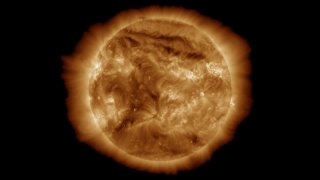
The northern lights are expected to dip farther south into the northern portion of the US Wednesday night thanks to a large burst of plasma and magnetic field from the sun that kicked off geomagnetic storm watches.
Two partial coronal mass ejections on May 7 and May 9 were observed on the Sun-Earth line and are expected to impact the planet and spark moderate to strong geomagnetic storms.
The National Weather Service's Space Weather Prediction Center said the CME from May 7 began affecting Earth on Wednesday and the CME from May 9 is expected to affect Earth around midday May 11.
Get South Florida local news, weather forecasts and entertainment stories to your inbox. Sign up for NBC South Florida newsletters.
The NWS rates geomagnetic storms on a scale of 1-5 and they've classified the impact of the first CME hitting the Earth on Wednesday as a G2 and the second ME on Thursday as a G3. The influence of the second CME is expected to diminish on Friday to a G2 before moving on.
Under G2 conditions, high-latitude power systems may experience voltage alarms, and long-duration storms may cause transformer damage. For spacecraft, corrective actions to orientation may be required by ground control; possible changes in drag affect orbit predictions. On the ground, high-frequency radio propagation can fade at higher latitudes, and aurora has been seen as low as New York and Idaho (typically 55° geomagnetic latitude).
Under G3 conditions, voltage corrections may be required for power systems, false alarms could be triggered on some protection devices. For spacecraft, surface charging may occur on satellite components, drag may increase on low-Earth-orbit satellites, and corrections may be needed for orientation problems. On the ground, intermittent satellite navigation and low-frequency radio navigation problems may occur, high-frequency radio may be intermittent, and aurora has been seen as low as Illinois and Oregon (typically 50° geomagnetic lat.).
U.S. & World
The geomagnetic storms are expected to make the northern lights visible in the northern United States. According to NOAA, the aurora may be visible as far south as Oregon, Idaho, Michigan and New York.



